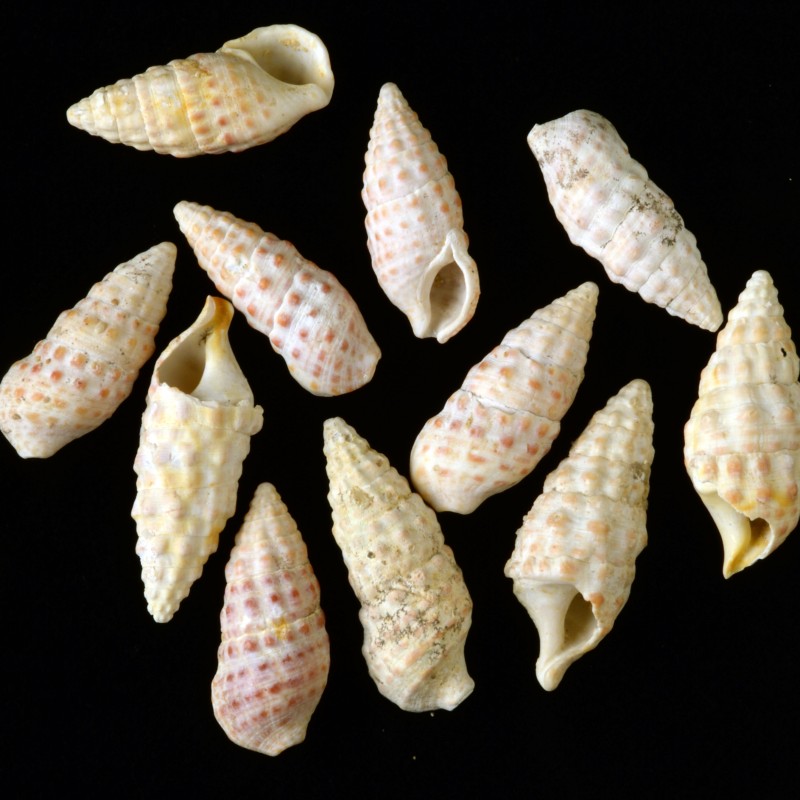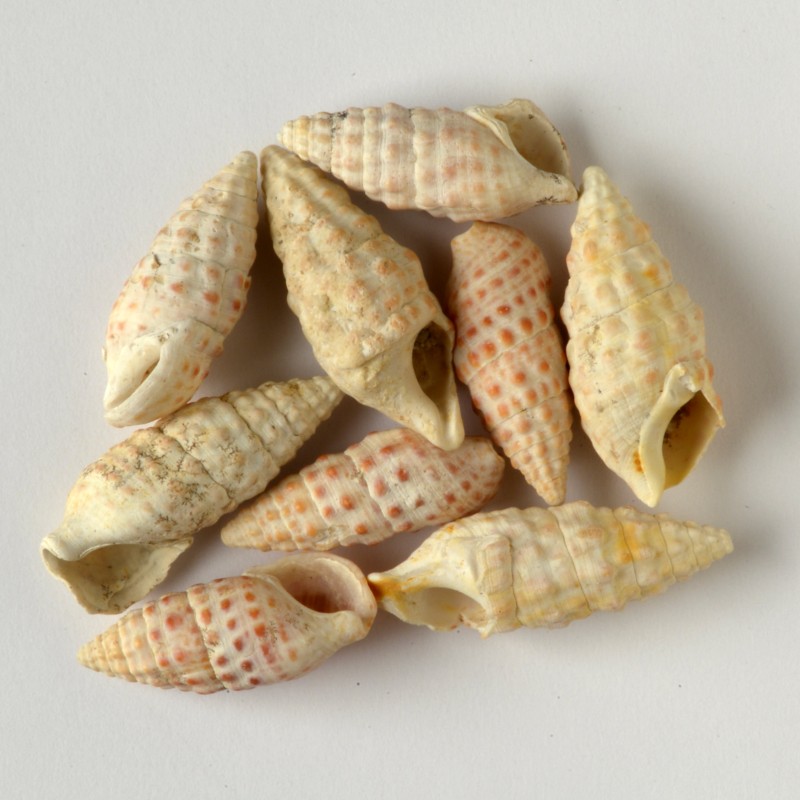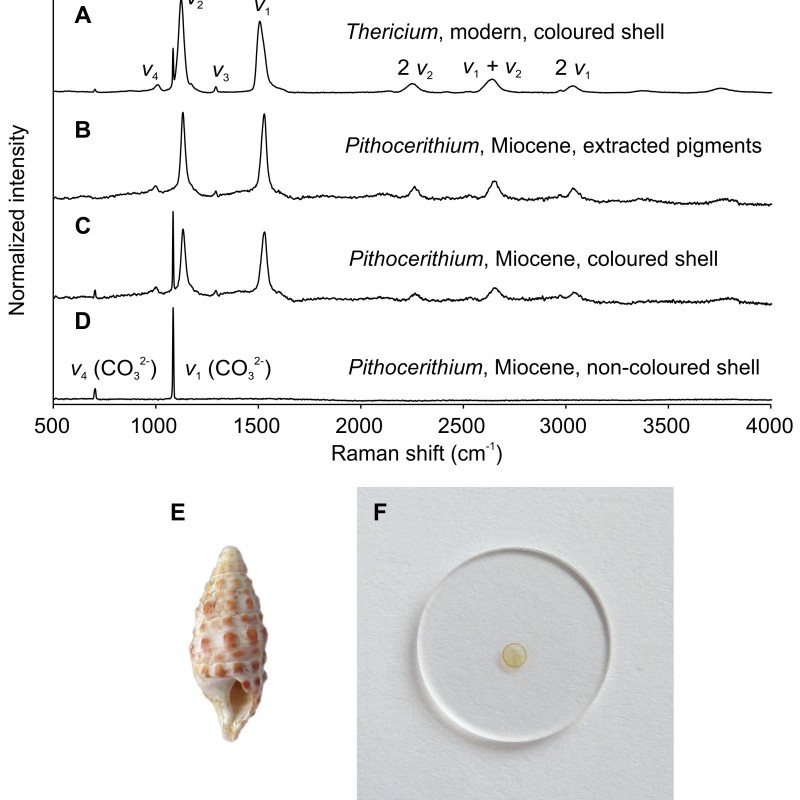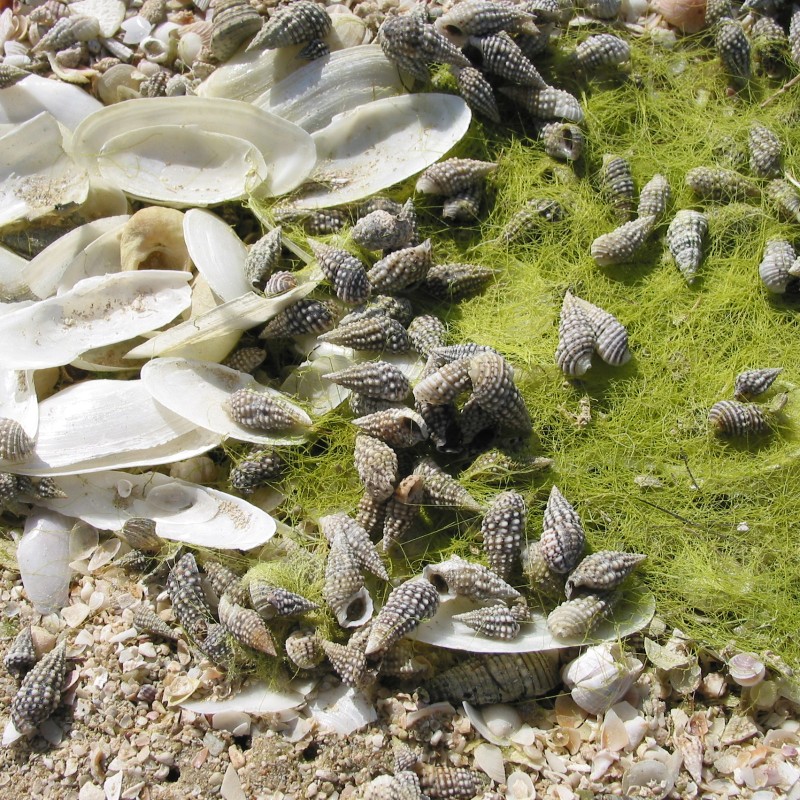Austria’s Oldest Colour
06.
February 2024
Pigments in fossil snail
shells from Austria dating back 12 million years are the oldest known preserved dyes from the polyene group, as scientists
from the Natural History Museum Vienna and the University of Göttingen have now demonstrated.
Many
of today’s snails show striking patterns of dots, spots and stripes. The most common colours in the snail shells are yellow,
orange, pink, red and black. These colours are produced when snails store dyes, so-called pigments, in their shells, which
are produced by special cells and deposited in varying concentrations. The chemical compositions of the pigments vary widely.
The most important chemical compounds include melanins and carotenoids. Melanins are responsible for the dark colours in our
hair and skin, and carotenoids also give bird feathers and egg yolks their typical red and yellow hues.
Snail shells are made of aragonite, a form of lime that remains more or less unchanged over millions of years. In contrast, pigments are very sensitive and are quickly broken down into their organic components. As a result, fossilised shells are usually light in colour and plain, and remnants of colour patterns on fossils are very rare. Sites where such fossils have been found are located along the border between Austria and Hungary in gravel pits south of St. Margarethen in Burgenland and near Nexing in Lower Austria.
Here palaeontologists from the Natural History Museum Vienna discovered shells of needle snails that lived 12 million years ago on the shores of what was then a tropical sea. “However, it was unclear whether the patterns were indicative of their original reddish colouration or were created by later processes in the sediment,” says Mathias Harzhauser, Director of the NHM Vienna’s Geological-Palaeontological Department.
To solve this puzzle, the shells were sent to the Geoscience Centre at the University of Göttingen, where Klaus Wolkenstein has spent years researching the chemistry of fossil pigments. Raman spectroscopy was used to successful identify the origin of the colours, which involved irradiating the sample with laser light and examining the emitted spectra. Each spectrum produces a fingerprint of the examined material, enabling the researchers to make a clear identification.
“To our surprise, it turned out that the pigments have actually been preserved nearly unchanged for 12 million years. This is the oldest evidence of these kinds of fossil pigments worldwide,” says geochemist and study leader Wolkenstein. In terms of their chemical composition, the detected pigments belong to the polyene group, which are organic compounds that also include carotenoids.
Press materials:
https://www.nhm-wien.ac.at/en/press_releases2024/oldestcolour
Article:
The results were published under “Rapid Communication” in Palaeontology.
Wolkenstein, K., Schmidt, B.C., Harzhauser, M. (2024) Detection of intact polyene pigments in Miocene gastropod shells. Palaeontology, e12691.
https://doi.org/10.1111/pala.12691
For scientific inquiries:
Mathias Harzhauser
Director of the Department of Geology and Palaeontology, NHM Vienna
https://www.nhm.at/mathias_harzhauser
Tel.: + 43 (1) 521 77 DW 250
mathias.harzhauser@nhm.at
Dr. Klaus Wolkenstein
Department of Geobiology, Geoscience Centre, University of Göttingen,
https://www.uni-goettingen.de/en/653377.html
Phone: +49 (0) 551 39 7962
klaus.wolkenstein@uni-goettingen.de
For general inquiries:
Irina Kubadinow
Head of Press Department, Press Spokesperson, NHM Vienna
https://www.nhm.at/irina_kubadinow
Tel.: + 43 (1) 521 77 - 410
irina.kubadinow@nhm.at
Nikolett Kertész-Schenk,
Press Department, NHM Vienna
https://www.nhm.at/nikolett_kertesz
Tel.: + 43 (1) 521 77 - 626
nikolett.kertesz@nhm.at
Snail shells are made of aragonite, a form of lime that remains more or less unchanged over millions of years. In contrast, pigments are very sensitive and are quickly broken down into their organic components. As a result, fossilised shells are usually light in colour and plain, and remnants of colour patterns on fossils are very rare. Sites where such fossils have been found are located along the border between Austria and Hungary in gravel pits south of St. Margarethen in Burgenland and near Nexing in Lower Austria.
Here palaeontologists from the Natural History Museum Vienna discovered shells of needle snails that lived 12 million years ago on the shores of what was then a tropical sea. “However, it was unclear whether the patterns were indicative of their original reddish colouration or were created by later processes in the sediment,” says Mathias Harzhauser, Director of the NHM Vienna’s Geological-Palaeontological Department.
To solve this puzzle, the shells were sent to the Geoscience Centre at the University of Göttingen, where Klaus Wolkenstein has spent years researching the chemistry of fossil pigments. Raman spectroscopy was used to successful identify the origin of the colours, which involved irradiating the sample with laser light and examining the emitted spectra. Each spectrum produces a fingerprint of the examined material, enabling the researchers to make a clear identification.
“To our surprise, it turned out that the pigments have actually been preserved nearly unchanged for 12 million years. This is the oldest evidence of these kinds of fossil pigments worldwide,” says geochemist and study leader Wolkenstein. In terms of their chemical composition, the detected pigments belong to the polyene group, which are organic compounds that also include carotenoids.
Press materials:
https://www.nhm-wien.ac.at/en/press_releases2024/oldestcolour
Article:
The results were published under “Rapid Communication” in Palaeontology.
Wolkenstein, K., Schmidt, B.C., Harzhauser, M. (2024) Detection of intact polyene pigments in Miocene gastropod shells. Palaeontology, e12691.
https://doi.org/10.1111/pala.12691
For scientific inquiries:
Mathias Harzhauser
Director of the Department of Geology and Palaeontology, NHM Vienna
https://www.nhm.at/mathias_harzhauser
Tel.: + 43 (1) 521 77 DW 250
mathias.harzhauser@nhm.at
Dr. Klaus Wolkenstein
Department of Geobiology, Geoscience Centre, University of Göttingen,
https://www.uni-goettingen.de/en/653377.html
Phone: +49 (0) 551 39 7962
klaus.wolkenstein@uni-goettingen.de
For general inquiries:
Irina Kubadinow
Head of Press Department, Press Spokesperson, NHM Vienna
https://www.nhm.at/irina_kubadinow
Tel.: + 43 (1) 521 77 - 410
irina.kubadinow@nhm.at
Nikolett Kertész-Schenk,
Press Department, NHM Vienna
https://www.nhm.at/nikolett_kertesz
Tel.: + 43 (1) 521 77 - 626
nikolett.kertesz@nhm.at





